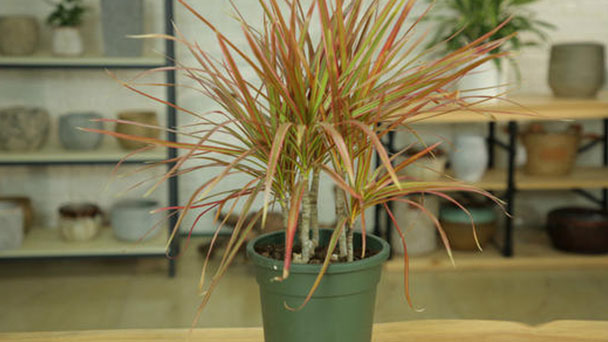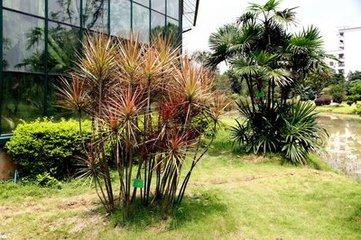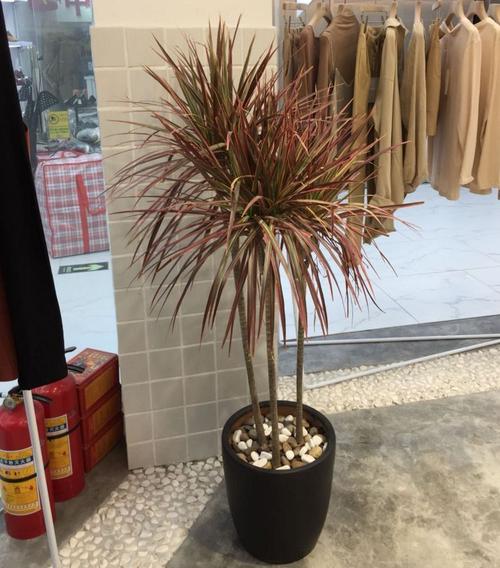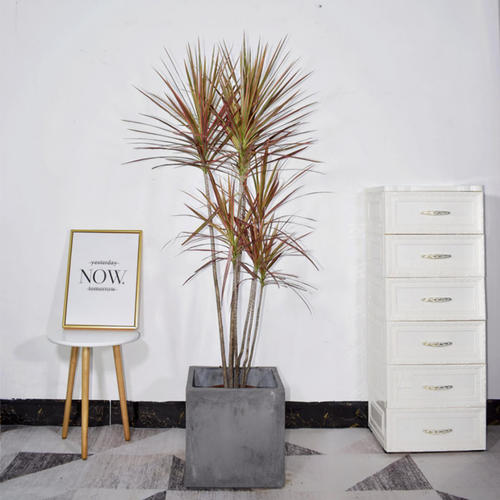Dragon Tree (Dracaena Marginata) Profile
Written by Maggie
Dec 06 2021

Dracaena marginata, widely known as Dragon tree, the main stem is tall and straight, the posture is old, the leaf cluster that spreads is loose, the shape is like an umbrella. The leaves are gorgeous and extremely beautiful. They are the most common indoor foliage plants. Dragon Tree is native to tropical Asia and Pacific islands. In the early 19th century it was introduced to Europe and soon settled in America. By the early 20th century, Dragon Tree had become very popular in Europe and America and was often used for interior decoration. Dragon Tree is also a medicinal plant. Its flowers, leaves and roots can all be used as medicine. It was once used in Guangxi for the treatment of hemoptysis, urine and blood, dysentery and other diseases.
Dragon tree picture
Morphological characteristics of Dragon tree
The underground part of Dragon Tree has well-developed rhizomes and is prone to sprout, which is different from Dragon blood tree. Its main stem is straight, stem height 1 ~ 3 m, unbranched or less branched. Leaves are clustered at stem apex, bifid, oblong to oblong, oblong to oblong, 20-60 cm long and 5-10 cm wide, apically acuminate, basally acuminate, green or purplish red, brilliant and varied. The petiole ca. is 16 cm, fluted, base broadly clasped. Flowers panicles are axillary, 20 -- 45 cm long, 20 cm wide, branching many. Flowers are reddish to bluish purple, with light yellow, ca. 2 ~ 5 mm long. Stamens are shorter than perianth lobes, attached to the perianth tube. The ovary is oblong, ca. 2 mm long, style slightly protruding from perianth lobes. The berry houses are spherical and usually contain only one seed.
Dragon tree growth habit
Dragon trees, a high temperature and like wet, belong to half shade plants. It can not bear the northern area hot sun exposure, complete shade will easily lead to yellow leaves. Dragon trees are not cold resistant. Except Guangdong, Guangxi, Fujian and other places, they are only suitable for greenhouse potted viewing. Acid soils rich in humus and well drained are required. Avoid alkaline soil. Plant in alkaline soil leaves easy yellow, new leaves pale, not drought.
Dragon tree distribution area
Dragon Tree is native to tropical Asia and Pacific islands, and is common in Guangdong, Guangxi, Fujian, Taiwan and India. Some species are native to Australia and New Zealand, and Dragon Tree is also prevalent in Australia.
From the beginning of the 19th century, Dragon Tree gradually spread to Europe, America and other regions and became popular. Now, Dragon tree is widely planted in the warm region of Asia, and is mainly cultivated in greenhouses in Europe and America.

Propagation methods of Dragon Tree
Dragon tree is usually propagated by cutting, layering and sowing.
1. Cutting propagation: Cut the top branches from June to October, with a length of 8 ~ 10 cm and 5 ~ 6 leaves, cut them short, insert them into the sand bed, keep them wet, the appropriate temperature is 24 ~ 27℃, not less than 20℃.
2. Layering propagation: layering is commonly used in May to June. Select the strong main stem, 20 cm from the top, row ring peeled, 1 cm wide, wet moss cover, and wrapped with plastic film, room temperature to maintain more than 20℃.
3. Sowing propagation: The seeds of Plantlet are mature in September, and the seeds are relatively large. They are usually planted in shallow pots, and the appropriate temperature for germination is 24 ~ 27℃. (Read more about Dragon Tree Propagation.)
Main uses of Dragon Tree
1. Medicinal uses:
Dragon Tree can clear heat, stop bleeding, disperse stasis, treat dysentery, vomiting blood, stool blood, stomachache, urine blood, menorrhagia, fall injury.
2. Layout: Potted plants are suitable for interior decoration, inpatient room and windowsill, elegant and chic. Arranged in a piece in the venue, public places, hall and room access, dignified and tidy, fresh and pleasing to the eye. There are many cultivars, leaf shape also has great change, it is the common plant that arranges indoor places.

Read More:
How to Propagate Dragon Tree
How to Take Care of Dragon Tree
How to Care for Dragon Tree
Latest Updated
- Benefits of Bugleweed - 7 Science-backed Health Benefits
- Bugleweed Dangers & Side Effects - Is It Poisonous?
- How to Plant Evergreen Trees - What You Should Know
- When to Plant Evergreens - Grow Guide for Evergreen Trees
- 12 Wonderful Evergreen Shrubs for Your Garden
- 12 Popular Evergreen Plants with Pictures for Beginners
- When And How To Prune A Lilac Bush Like a Pro
- How to Grow & Care for Lilac Vine (Hardenbergia Violacea)
- Japanese Lilac Tree (Syringa Reticulata) Care & Propagation Guide
- Shumard Oak Pros and Cons - What to Know
Popular Articles
- Winter maintenance of Antirrhinum Majus
- How to Grow Terminalia Mantaly Tree
- How to Grow and Care for Crossostephium Chinense
- How to grow Antirrhinum Majus in spring
- Peristeria Elata (Dove Orchid) Profile: Info & Care Guide
- Underwatered Snake Plant (Sansevieria Trifasciata) - Signs And How To Fix
- How to Care for Brazilian Jasmine Plant (Mandevilla Sanderi)
- How to Grow & Care for Graptopetalum Purple Delight in Summer
- Rosa Chinensis (China Rose): Plant Growing & Care Tips
- How to Care for Baby Sun Rose (Aptenia Cordifolia)
